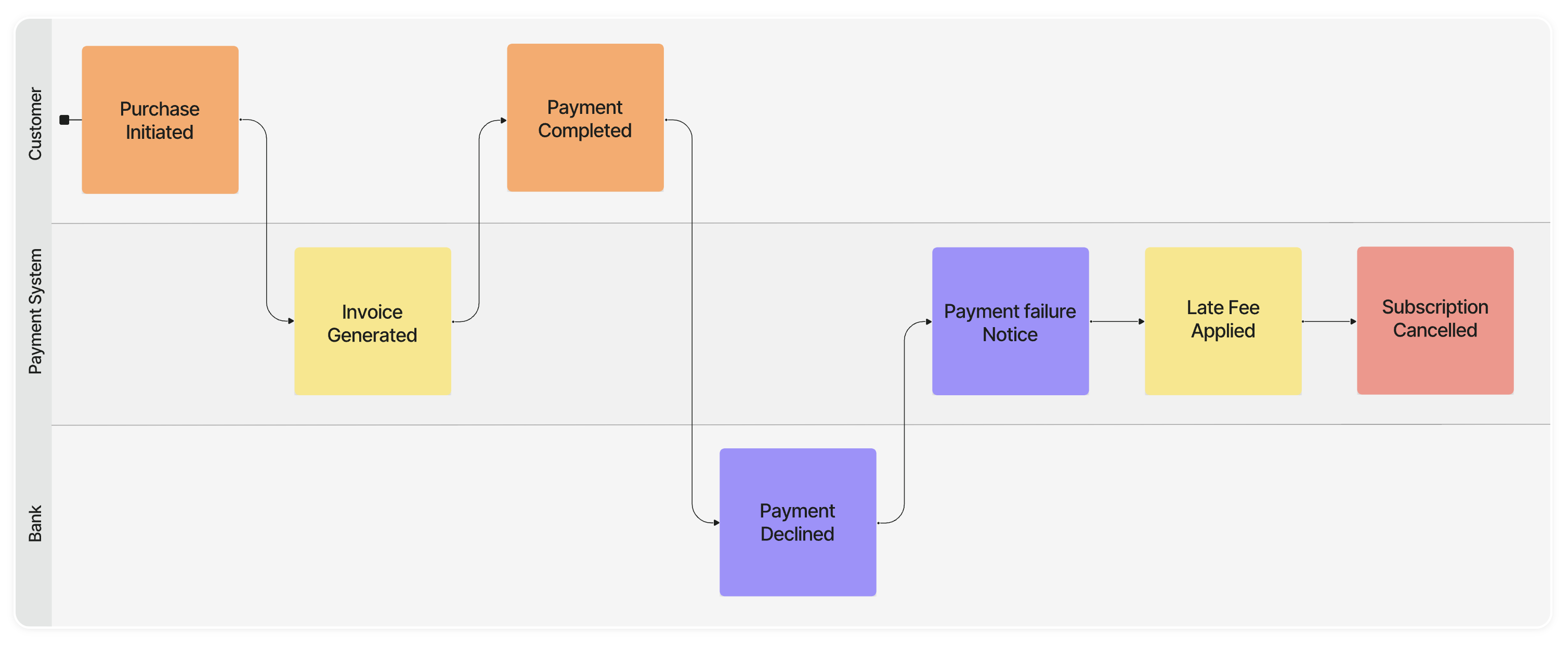

Five years ago, the most expensive way to figure out if your product idea would work… was to build it. In 2025, the cheapest way is to build it. Yes, you read that right, discovery has flipped on its head!
Product discovery was about de-risking. About making sure we didn’t waste months of engineering effort on the wrong thing. We’d do endless interviews, customer journeys, and double-diamonds, all to avoid the high cost of building.
But today? AI can take you from problem statement → working prototype in a day. With AI-assisted Domain Modeling, backend API generation, and automated UI scaffolding, the build cost is so low it’s barely worth talking about. The bigger risk now is not putting something in users’ hands fast enough.
Problem → Event Storm → Prototype → Reality Check
Step 1: Pick a problem
Don’t overthink it. It doesn’t have to be the perfect problem.
Step 2: Quick Event Storming
Get all stakeholders in the room (or in Miro/Qlerify). In a few hours, you’ll identify your core processes and the 2–3 most important problems to solve.
Step 3: Auto-generate a prototype
From the Event Storming output, feed your domain model into AI.
Minutes later: you have a backend, API, and working UI.
Step 4: Experience it
Run it. Break it. Put real or simulated data through it.
In the past, we warned against converging on a solution too early. Now? Converge early, build it, and if it fails, just throw it away. It’s cheap. The learning is priceless.
We no longer strictly separate problem space and solution space. Why? Because once you see the solution, it often reframes the problem. Sometimes, your “wrong” solution turns out to solve a different (and more valuable) problem.
Interviews are better with a prototype. Surveys are easier with a demo. User testing is more real with a functioning product. In 2025, ideation flows directly into prototyping.
Most prototypes should be thrown away. If users don’t love it within days or weeks, it’s probably a no-go. Learn fast, restart, and feed your insights into the next Event Storming session.
Conclusion: The goal of product discovery is to reach a confident decision: go or no-go. In the old world, that meant minimizing the cost of being wrong. In 2025, it means maximizing the speed of being right.
Qlerify is a collaborative modeling tool designed for the AI era of product discovery. In minutes, teams can run an Event Storming session, capture their domain model, and auto-generate a working prototype, complete with backend, API, and UI. By removing the heavy lifting from early development, Qlerify lets you validate ideas with real user feedback faster than ever before. Build, learn, and iterate in one continuous loop.

